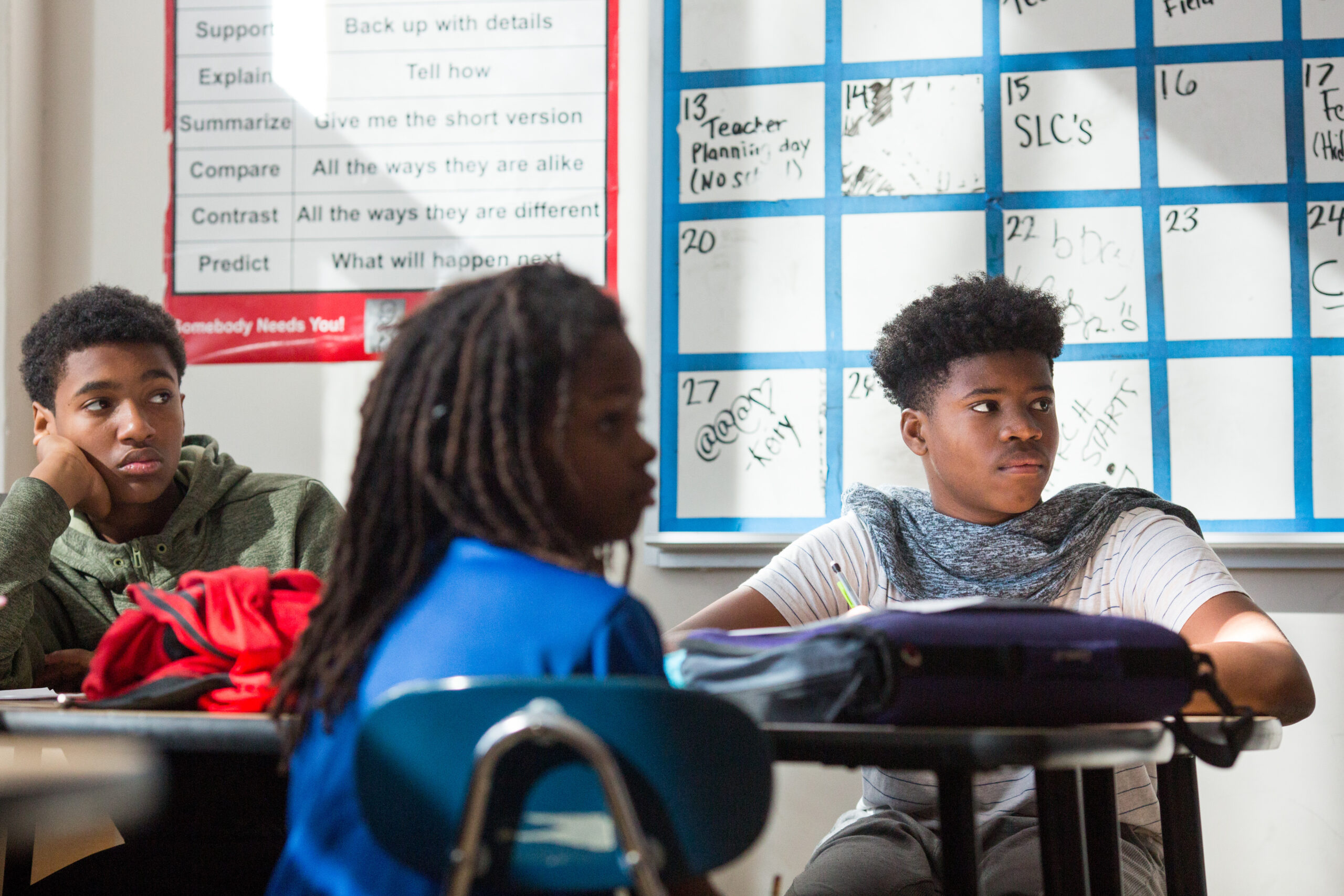More than 200 DC Public School (DCPS) staff positions across the District were on the chopping block under Mayor Bowser’s proposed fiscal year (FY) 2025 budget, despite a large (12.4 percent) increase to the Uniform Per Student Funding Formula (UPSFF)[1] and supplemental funding for students “at risk of academic failure.” Thirty schools in Wards 5, 7, and 8—the wards with the highest percentage of “at-risk” students—were projected to lose staff, on net, under the mayor’s proposal. These proposed staff cuts were largely due to increased labor costs, inflation, and the expiration of federal pandemic aid outstripping the UPSFF increase, as well as enrollment decline in some schools.
To stabilize school budgets, the Council reallocated $25 million from other parts of the budget—including DCPS central services—to ensure that no school faced cuts of more than 5 percent of their budget and to reduce staff cuts. This reallocation aligns with the stabilization goals within the Schools First in Budgeting Act (Schools First) Councilmembers pointed to overspending and inefficiencies to justify the cuts to DCPS central services, which supports schools by providing curriculum, professional development, and personnel such as social workers and food service workers.
The Council also allocated $3.5 million for an additional staff member at each elementary school in Wards 7 and 8, where many schools are contending with significant enrollment decline. They also added funds for a new Safe Passage area in Ward 5 to support students as they travel to and from school, with the goal of protecting them from gun violence.
Overall, these stabilizing investments advanced equity by ensuring schools with majority Black and brown students and students from families with low incomes were better resourced. Even with Council’s improvements to school budgets, lack of vision and flaws in the way DC allocates funding to and within the DC Public School (DCPS) system undermines educational equity at multiple points of the budgeting process.
Lawmakers Should Take Further Steps to Fund Schools Adequately and Equitably
DCPS leadership and DC Councilmembers continue to disagree on how to allocate funding to individual schools and by how much. Chairman Mendelson admitted during the first budget vote in May that it may be time to revisit the Schools First law for potential improvements to more adequately meet the resource needs of schools. Under the law, some schools received extra funds even though their budgets were already stabilized under the mayor’s proposal, while other schools did not receive enough funding to reverse all staff cuts. The Schools First adjustments are allocated to schools months after the initial budgets. But principals inform staff of potential cuts based on initial budgets, which often results in turnover. The Council should act now to avoid a repeat of this situation in next year’s budget.
In addition, “at-risk” funding, which improves equity by accounting for the added costs of serving students whose families receive income assistance and are therefore considered “at risk” of academic failure too often goes to fund basic school services. By law, “at-risk” funds are required to supplement, not supplant, a school’s budget, but schools with insufficient resources in FY 2025 (as in prior years) may end up using a significant share of these funds on positions that schools need to function, such as health and physical education teachers and administrative officers.
To better ensure schools across the District have adequate resources to allocate in equitable ways so that students and educators can thrive, the Council should:
- Require enhanced reporting on “at-risk” funding in the Common Financial Reporting Standards to provide additional insight on spending and strategies to address learning gaps for “at-risk” students, as recommended by the 2023 Adequacy Study. This will allow Council to hold DCPS more accountable on “at-risk” spending rules.
- Work with DCPS to collect feedback from school leaders about their ability to engage in the budget process and how the timing impacts hiring and educator retention.
- Revisit the Schools First formula to address any inequities that school communities have faced.
- Create a long-term vision for education finance in the District by re-establishing a working group comprised of educators, advocates, and families to provide recommendations for school funding.
[1] Students are designated “at risk” if their families receive food or income assistance through SNAP or TANF, experience homelessness, are in the foster care system, or exceed the typical age in high school.

